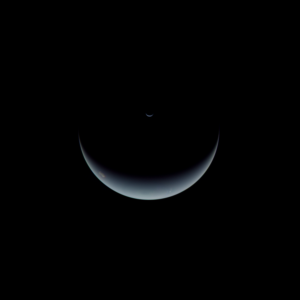
Planets Big and Small
Eve Lee, Ph.D.
Sunday, July 10, 2022
7:30 PM to 9:00 PM EST
Online event
Monthly Meeting – Public Invited
Abstract:
Planets in our solar system can be divided into rocky terrestrials as large as the Earth vs. gassy giants as small as Neptune. Planets outside of our solar system, on the other hand, look nothing like our own, with most of these detected exoplanets falling right in between the size of the Earth and Neptune. How can we understand such differences? I will describe the underlying physics that drives the huge diversity in the observed exoplanetary population and discuss how future missions can help us better understand the formation and evolution of solar and extrasolar planets.
Bio:
Dr. Eve Lee is an Assistant Professor of Physics at McGill University in Montreal, Canada. She received her Hon. BSc in Physics and Astronomy at the University of Toronto, PhD in Astrophysics at UC Berkeley, and spent two years as a Sherman Fairchild Postdoctoral Scholar at Caltech before taking up the faculty position at McGill in 2019. At McGill, Dr. Lee leads a theoretical astrophysics group specializing in the formation of stars and planets. She was recently awarded the 2022 Annie Jump Cannon Award from the AAS.
Learn about the formation of supermassive black holes and what exciting new discoveries await us from the James Webb Telescope. Join NOVAC and one of the leading astrophysists in this field of study, Dr. Jenny Greene, Professor of Astrophysical Sciences at Princeton University.
When: 10/9/22, 7:30pm EDT
Where: Dr. Greene will present virtually. Those interested may meet at George Mason University, Exploratory Hall, Room 3301 (arrive as early at 6:30pm).
For those wishing to join virtually here is the link:
NOVAC General Meeting
Sunday, October 9 · 7:30 – 9:00pm
Google Meet joining info
https://meet.google.com/osh-bcyd-gti
Or dial: (US) +1 484-430-1468 PIN: 486 839 001#
More phone numbers: https://tel.meet/osh-bcyd-gti?pin=1354183604637
Talk Title: The birth of supermassive black holes
Abstract: Supermassive black holes are ubiquitous at the centers of massive galaxies in the universe today, but we have no idea when or how these monsters are first formed. For the first time we have the chance to catch them as babies or adolescents just hundreds of millions of years after the Big Bang, thanks to the remarkable performance of the James Webb Space Telescope. I will discuss prospects for first results in this area in the coming year.
Jenny Greene is a Professor of Astrophysical Sciences at Princeton University, where she has been chasing intermediate-mass black holes for more than a decade. She is also the faculty director of the Prison Teaching Initiative.
See featured article on front page for more detail and link to join.
https://www.novac.com/wp/blog/novac-public-meeting-2-5-23-730pm-est/
See featured article on front page for more detail and link to join.
See featured article on front page for more detail and link to join.
Come out and celebrate National Park Week with NOVAC at the Wolf Trap Performing Arts Center in Vienna, Virginia!
Special Notes: Volunteers may setup as early as 3:00 pm! Solar viewing is an option. If you’d like to bring a solar scope, let Kandi Mitchell, NOVAC Outreach Coordinator know ASAP so we can get Wolf Trap to broadcast a start time before sunset. They’ve agreed to do this if we can make the commitment to start early. The event will be held at 1551 Trap Road and be in the Meadow or in case of rain one of the pavilions.
See featured article on front page for more detail and link to join.
See featured article on front page for more detail and link to join.
See featured article on front page for more detail and link to join.
See featured article on front page for more detail and link to join.

